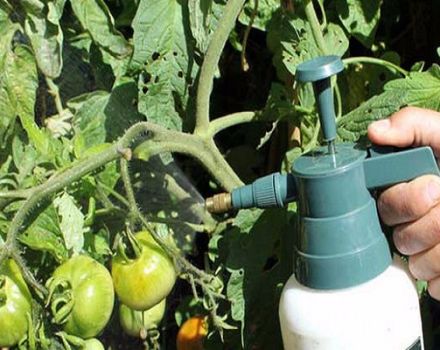Description of the Gunnar cucumber variety, its characteristics and cultivation
Cucumbers are traditionally popular in our latitudes. Russians respect this vegetable both fresh, and salted, and pickled. Cucumber Gunnar f1 is good for all of the above. This is a suitable variety for growing in the central regions of the country, where it is looked after in a greenhouse, but it is better not to risk planting a cucumber in open beds.
Cucumber dutchman
A description of cucumbers like Gunnar should start with the fact that the variety is hybrid. It is noteworthy that it does not require pollination by bees, which is important in conditions of growth under the film. The hybrid stoically tolerates many atmospheric nuances, and also calmly withstands soil salinity.
The positive characteristic of Gunnar cucumber is made up of the following indicators:
- rapid maturation;
- fairly high yield;
- preservation of useful properties during transportation;
- even when overripe does not become barrel-shaped;
- suitable for long-term storage.
Among the shortcomings, we note one - this is the high cost of seeds.

Growing features
Sowing with cucumbers Gunnar starts in May with good soil warming. This is necessary to ensure the rapid germination of the shoots. The seeds are lowered into the soil to a depth of about one and a half centimeters.
As soon as the sprouts hatch, it is necessary to ensure the temperature inside the greenhouse is at the level of plus 20 degrees Celsius. In the future, it is advisable to lower the temperature by another two degrees - this is the ideal environment for Gunnar's Dutch cucumber.
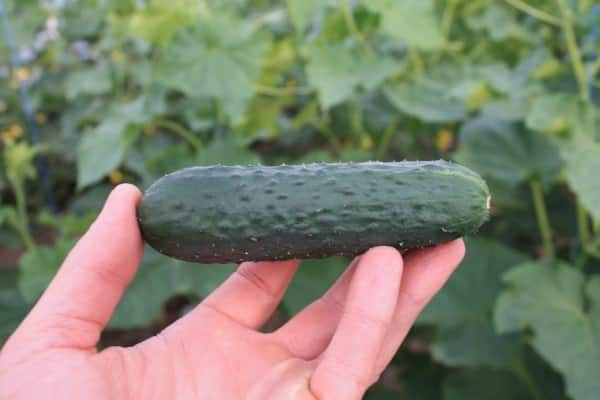
The vegetable grows in one stem. When five leaves appear, ovaries and shoots are removed. This process is called blinding. In the future, one ovary is left, and the lateral shoots are eliminated. After that, the cucumber stalk is wrapped around the trellis at a height of about two meters and pinching is done behind the third or fifth leaf. The withered lower leaves are removed in the morning. According to the plan, three to five cucumbers should ripen at the same time.
Under normal growth conditions, the crop is harvested three times a week, and at favorable times and plentiful harvests - daily.
Description of the fruit
The fruit of a cucumber is spindle-shaped with pimples on the skin. We will continue the description of the variety with a small list:
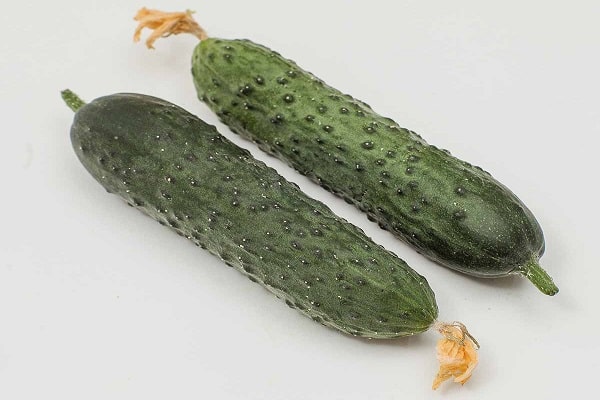
- length 10-14 centimeters;
- weight 80-120 grams;
- color is dark green;
- the flesh is sweetish in taste.
Fruiting of the Gunnar cucumber is abundant throughout the season.

What to feed?
For best growth, cucumbers need to be regaled with complex fertilizers at various stages of cultivation. Offer the plants nitrogenous fertilizers. As an option: dilute 60 grams of superphosphate and 20 grams of urea in ten liters of water.Or use the following recipe: take 10 grams of ammonium nitrate, superphosphate, potassium salt and pour into a bucket with ten liters of water. As an addition to mineral fertilizers for cucumbers, rotted compost based on cow dung or chicken droppings can serve.
Cucumbers are further fed exactly before flowering. It makes such a mixture: take and mix 20 grams of potassium and ammonium nitrate, 40 grams of superphosphate per 10 liters of water.
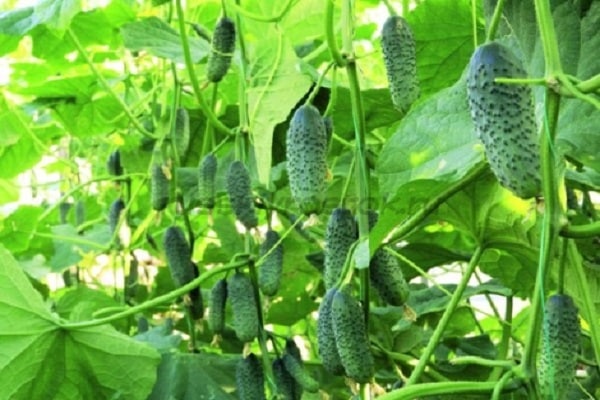
It is recommended to sprinkle the soil with ash obtained from burning logs after watering and before loosening. If you don't want to be smart with your own cucumber dressings, you can use ready-made mineral fertilizers purchased in the store's business department. For example, such as:
- Radifarm.
- Magnisal.
- "Humat".
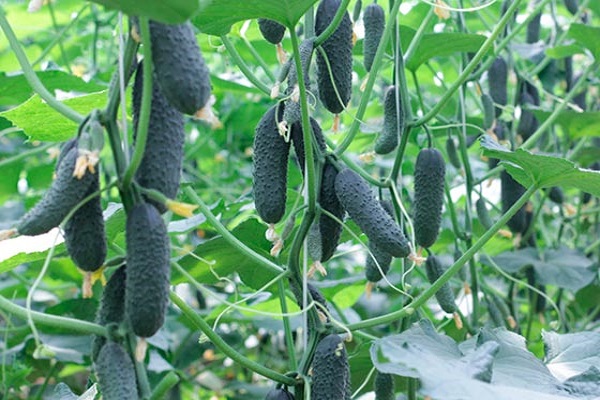
Diseases and pests
Gunnar cucumber is not very susceptible to diseases. Its main scourge is defenselessness in relation to downy mildew.
Dew attacks the plantings during the fruiting period. Oily green specks suddenly appear on the leaves of cucumbers, which increase in size after a week. The leaves turn brown, and after a couple of days they dry out completely. The disease is provoked by soil fungi, which begin to spread instantly when irrigated with cold water and due to the formation of condensation inside the greenhouse due to the difference between the internal and external temperatures.
We offer a description of ways to combat powdery mildew:
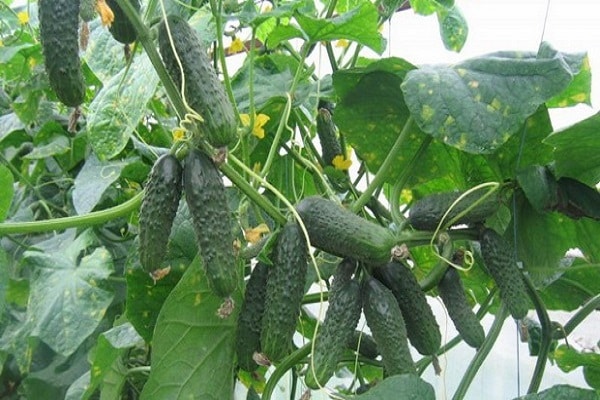
- Before sowing, Gunnar cucumber seeds are heated and disinfected with a solution of potassium permanganate.
- The seeds are immersed in the soil exclusively in the heated soil.
- Watering young sprouts must be done with warm water, but without excessive moisture.
- Do not forget about feeding cucumbers.
- For prevention, you need to spray greens with a solution of urea.
- Do not plant cucumbers on contaminated soil for five years.
- In case of damage by dew, watering and feeding are suspended for a week and treated with "Polycarbacin" or the drug "HOM".
- After the harvest, the greenhouse and the soil are treated with a solution of copper sulfate.
Among the pests dangerous for Gunnar's cucumber, it is worth noting the spider mite and whitefly.
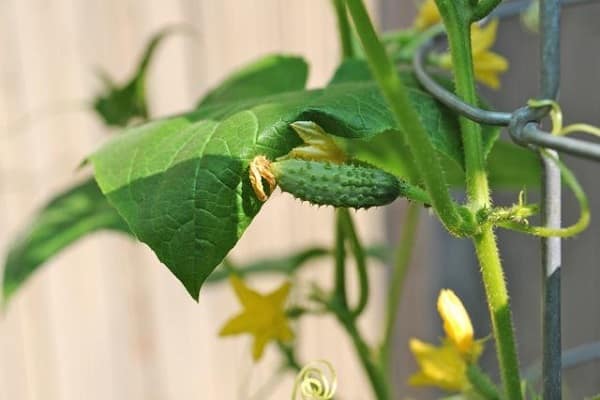
The spider mite sucks out the juices of the plant, and the leaves are entwined with cobwebs. The pest loves dry weather and soil. For prevention, you should disinfect the soil in the greenhouse. If this does not help, then you need to treat the plants with garlic or onion infusion in a proportion of 200 grams per ten liters of water with repeated spraying during the season.

The whitefly lays its eggs on the underside of the cucumber leaves. Its larvae, like the tick, suck the sap from the plant. To eliminate the pest, the plant is sprayed with the aforementioned garlic solution, the larvae are washed on the ground, the soil is loosened and sprinkled with peat or humus.
All these activities will help to achieve high yields of a cucumber called Gunnar.









